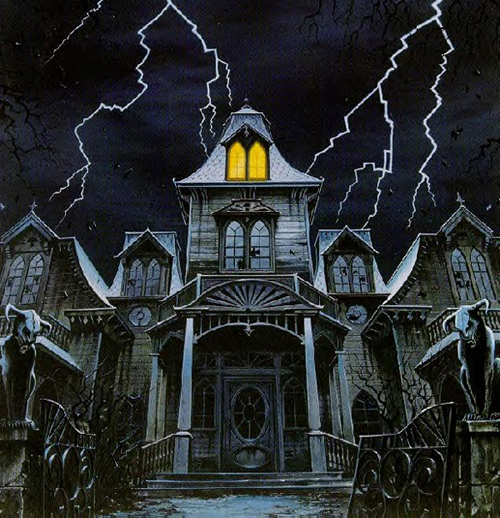Entering the Haunted House

Nothing says "Halloween" as much as a haunted house. Some believe that there are real haunted houses, such as the Deering Estate in Miami. But really, is there such a thing as spirits or ghosts? By my calculations, the earth should have produced at least several trillion dead people by now. If ghosts are real, they should be overcrowding every last domicile in sight. Yet hauntings are rare, isolated, and often dubious.
Are there other explanations for "haunted" buildings? Why yes! I've collected a number of them below, though there may be more.
- Carbon monoxide: This one gets mentioned a lot, and is called out explicitly in the Wikipedia entry. CO can be released by a malfunctioning furnace, of which there are probably many in older houses and buildings in need of refurbishment. The feelings of dread and hallucinations are common symptoms, perfect for making one think he or she hears sounds or sees visions that aren't there. The most famous example of this was the "haunting" of the family of Dr. William Wilmer in the early 1900s.
- Infrasound: We have all heard of ultrasound, which consists of frequencies above hearing range of the human ear. Infrasound is the opposite, frequencies below our hearing range, i.e. < 20 Hz. It turns out that these sounds have interesting effects on us, inducing feelings of unease, dread, even chills (one recalls the dropping thermostat in The Sixth Sense). Things get even weirder around 19 Hz, which is the resonant frequency of the human eyeball. Once our eyeballs start vibrating, we are liable to see just about anything. Infrasound tends to be caused by malfunctioning mechanical equipment, particularly fans, thus earning the nickname of "the ghost in the machine". English engineer Vic Tandy managed to identify this as a major explanation for the haunted laboratories at Warwick.
- Optical tricks: Humans are not adapted for vision at nighttime, and thus it's easy to fool us. A lot of accounts are based on peripheral vision, which is even less reliable than forward vision. Photographs of "apparitions", like this one, and this video version, are often held up as conclusive visual evidence of spirits. Of course, we have also seen a face and a woman on Mars, both of which were later debunked. On the video side, people tend to capture a lot of glowing and floating "orbs", often not much bigger than a laser pointer dot. Admittedly, there are some weird optical phenomena we are still trying to explain, like ball lightning and Brown Mountain lights, but a ghost ought to do a better job than a 1/2" circle.
- Suggestibility of the human mind: We are not nocturnal creatures. We don't see well at night, and still retain internal coding that tells us that predators come out when the sun goes down. We no longer live in fear of saber-tooth tigers coming to get us, but our imaginations still run wild during the dark hours. A house or building which produces a lot of spooky creaking noises is all we need. The recordings of "ghost voices" likely have the same caveats of photos and videos described above.
- Hoaxes: The recent "balloon boy" scam indicated how easy it can be to fool a great number of people. A lot of haunted house accounts are taken directly from witnesses without any verification. It is widely believed that the Amityville haunting was merely a fabrication invented by George amd Cathy Lutz and provided the material for many bad horror movies to follow.
- Etc...: Paranormal activity lurks at the periphery of scientific explanation. It persists in areas where we don't have a satisfactory rational explanation. I might call it the "ghost of the gaps".